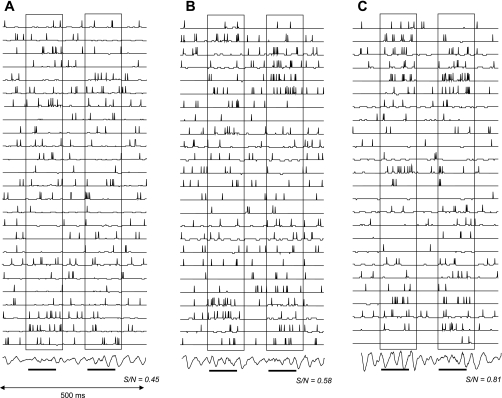Fig. 3.
Modulation of model odor responses. Membrane potential and action potentials in a subset of olfactory bulb model Mi cells are shown in response to very low concentration odor stimuli; odor presentation is indicated by lower horizontal bars and is highlighted by outlined boxes. Odor stimulation activated OSNs to 10% of their maximal activation level. The model is modulated with no (A), low (B; mainly α2 effects), and high levels of NE (C; mainly α1 effects). The NE modulation corresponds to the negative and positive peaks of the modulation function in Fig. 2A. Signal-to-noise ratio (S/N) for each simulation is indicated below the traces and is calculated as the number of spikes evoked during odor stimulation divided by the total number of spikes evoked during the 500-ms simulation. Note that Mi cell odor responses are enhanced with respect to background activity when low NE levels are simulated and S/N is increased. At high NE levels, Mi cell responses to odorants are further increased on a background of lower spontaneous activity, and S/N further increases. Note that although the total number of spikes over the course of a 500-ms simulation does not substantially change, the distribution of spikes during spontaneous and odor activity does change. The traces at bottom represent model field potentials recorded in the Gr cell layer.

